STORY HIGHLIGHTS
- NEW: A San Francisco official says four are unaccounted for
- Asiana Airlines' Flight 214 was arriving from Seoul when it crashed
- At least 130 are being or will be treated at Bay Area hospitals, fire chief says
- "Everything is on the table," the NTSB chief says of the investigation
Asiana Airlines Flight 214 left Seoul's Incheon International Airport earlier Saturday, according to FlightAware, a website that offers tracking services for private and commercial air traffic. An airline spokesman in Seoul told CNN that 291 passengers and 16 staff members were aboard when it crashed around 11:30 a.m. (2:30 p.m. ET).
Two people have died, San Francisco Fire Chief Joanne Hayes-White said.
"Upwards of approximately 60 people" are unaccounted for, the chief said. Just over an hour later, Francis Zamora of San Francisco's Department of Emergency Management told CNN that four were unaccounted for, though he didn't explain the discrepancy.
At least 130 others are being treated, or will soon be treated, at nine Bay Area hospitals, Hayes-White said around 4:10 p.m.
Eight injured adults and two children at San Francisco General Hospital are in critical condition, said San Francisco General Hospital spokeswoman Rachael Kagan.
Authorities warned the numbers of dead, injured and unaccounted for at San Francisco International Airport could change in the coming hours. First responders have gone on the plane "doing search and rescue attempts," Hayes-White said.
"This is still a fluid and active scene," Mayor Edwin Lee told reporters.
Air traffic control audio -- between the airport's tower and Flight 214 crew members -- suggested that those on the ground knew there was some sort of problem, promising that "emergency vehicles are responding."
"We have everyone on their way," the air traffic controller said, according to LiveATC.net, a website that provides air traffic control audio.
One of those on the flight, Elliott Stone, told CNN that he thought the plane was approaching "a little high (then came) down a little sharp.
"All of a sudden, boom, the back end just hit and flies up into the air and everyone's head goes up the ceiling," said Stone, who added that he ended up jumping out the plane without using the stairs or an evacuation slide.
Anthony Castorani, who witnessed the landing from a nearby hotel, said the plane touch the ground then noticed a large plume of smoke.
"You heard a pop and you immediately saw a large, brief fireball that came from underneath the aircraft," he told CNN.
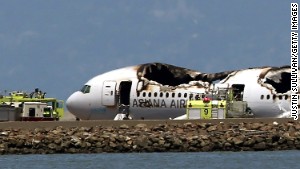 Passenger: 'We just jumped off' plane
Passenger: 'We just jumped off' plane 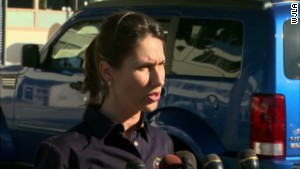 NTSB: We'll look for flight recorders
NTSB: We'll look for flight recorders 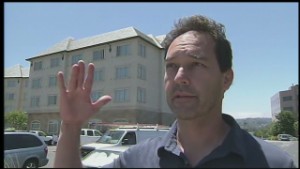 'The wheels ... were too low, too soon'
'The wheels ... were too low, too soon' 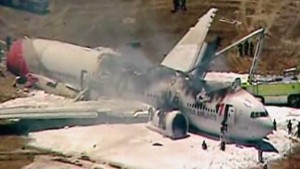 Plane loses tail during crash landing
Plane loses tail during crash landing 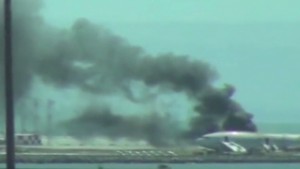 Plane crashes at San Francisco airport
Plane crashes at San Francisco airport 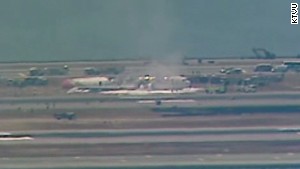 'Large, brief fireball' as plane landed
'Large, brief fireball' as plane landed
Kristina Stapchuck saw the dramatic scene unfold from her seat on a plane on the airport tarmac. Soon after Flight 214 touched down, "it looked like the tires slipped a little bit and it rocked back," she told CNN.
Parts of the plane began to break off as it rocked and then began to spin.
"It all happened so suddenly," Stapchuck told CNN.
A photo provided to CNN by Eunice Bird Rah -- and shot by her father, who was a passenger on the plane -- shows flames and smoke bursting out of many of the aircraft's windows.
Rah's father knew something bad was coming, he told his daughter, telling her that the pilot appeared to try to raise the plane at the last minute. Rah said her father "is doing fine, thank God," but noted that others appeared to be hurt.
Said Rah: "It's heartbreaking."
Passengers run from plane, flames
Video taken soon after the crash and posted on YouTube showed dark gray smoke rising from the plane, which appeared to be upright. That smoke later became white, even as fire crews continued to douse the plane.
CNN iReporter Timothy Clark was on an eighth-floor balcony of a nearby hotel when he heard the noise and saw a "dust cloud."
"Then people running from the plane, then flames," Clark said.
A photograph posted to Twitter shows what appear to be passengers walking off the plane, some of them toting bags, as smoke rises from the other side. Hayes-White said many had already gotten off by the time first responders arrived.
"I just crash landed at SFO," read the accompanying message from David Eun. "Tail ripped off. Most everyone seems fine. I'm ok. Surreal..."
The plane can carry 301 passengers and travel a maximum distance of 9,395 nautical miles
Asiana Airlines operates 71 aircraft and serves 14.7 million passengers annually
The airline was voted Airline of the Year by Global Traveler in 2011
In 1993, Asiana Airlines Boeing 737 crashed killing 68 people
The top of the aircraft was charred and, in spots, gone entirely, according to video from CNN affiliate KTVU. The plane was on its belly, with no landing gear evident and the rear tail of the plane gone.
Debris settled from the water's edge, along San Francisco Bay, up to where the plane eventually came to a stop.
Fire trucks were on site; first responders could be seen walking outside the aircraft.
Evacuation slides could be seen extending from one side of the aircraft, from which there was no apparent smoke.
According to Asiana Airlines, 141 of the passengers who were aboard Flight 214 are Chinese, 77 are South Korean and 61 are American.
Sheryl Sandberg, Facebook's chief operating officer and author of the book "Lean In," was supposed to be one of them, she wrote on her Facebook page. But she'd switched instead to a United flight, arriving about 20 minutes before the Asiana flight crashed.
Flights diverted to other airports
The Bay Area airport was closed to incoming and departing traffic after the crash, the Federal Aviation Administration said on its website, adding that the time when it's expected to reopen is unknown.
At one point flights destined for San Francisco's airport -- known by its call letters, SFO -- were diverted to airports in Oakland, Sacramento, San Jose and Los Angeles, said Zamora.
In an official tweet around 3:30 p.m., San Francisco International Airport said that two of its runways had reopened.
The airport, located 12 miles south of downtown San Francisco, is California's second busiest, behind LAX.
There were a few clouds in the sky around the time of the crash, and temperatures were about 65 degrees, according to the National Weather Service. Winds were about 8 miles per hour.
Members of South Korea's Aviation and Railway Accident Investigation Board will travel to San Francisco, that agency said. They'll be joined by members of the United States' National Transportation Safety Board, which is sending a "go team" led by chairwoman Deborah Hersman to investigate the crash.
"We have not determined what the focus of this investigation is yet," Hersman said shortly before leaving Washington for San Francisco. "Everything is on the table at this point."
There are no signs of terrorism related to the crash, a national security official told CNN. President Barack Obama was at Camp David when he learned about the crash, a senior White House official said.
Asiana Airlines -- one of South Korea's two major airlines, the other being Korean Air -- is also investigating the cause of the crash, a company spokesman told CNN.
The airline received the plane involved in the incident in 2006, according to the Aviation Safety Network. The aircraft has two Pratt & Whitney engines, it said.
Flying to 23 other countries, the 25-year-old Asiana operates many of its flights out of Incheon International Airport, which is the largest airport in South Korea and considered among the busiest in the world.
According to information on Asiana Airlines' website, the company has 12 Boeing 777 planes. The airliners have a seating capacity of between 246 and 300 people and had a cruising speed of 555 mph (894 kph).
CNN's Mike M. Ahlers, Chelsea J. Carter, Rande Iaboni, K.J. Kwon, John King and Janet DiGiacomo contributed to this report.
We recommend
From around the web
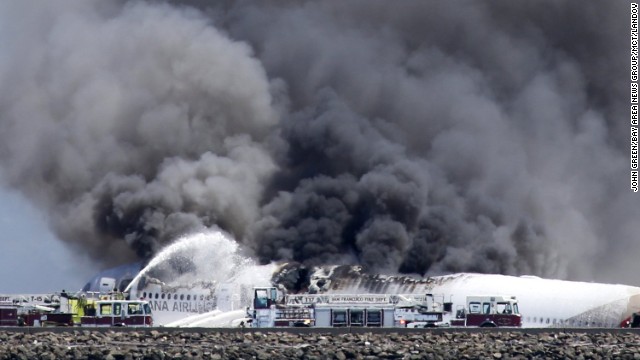




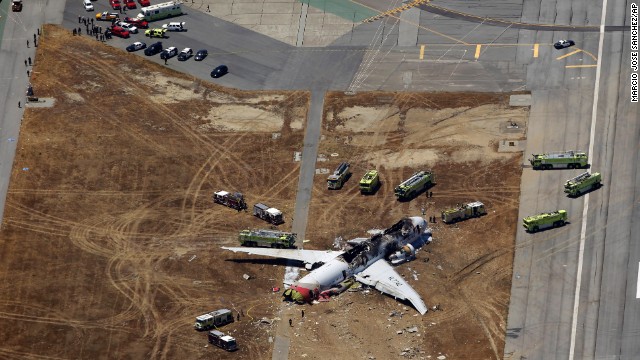 An aerial photo of the scene on July 6 shows the extent of the plane's damage.
An aerial photo of the scene on July 6 shows the extent of the plane's damage.
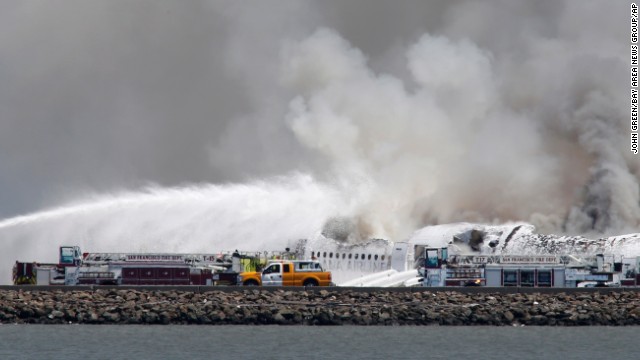 Fire crews work at the crash site at San Francisco International Airport on July 6.
Fire crews work at the crash site at San Francisco International Airport on July 6.
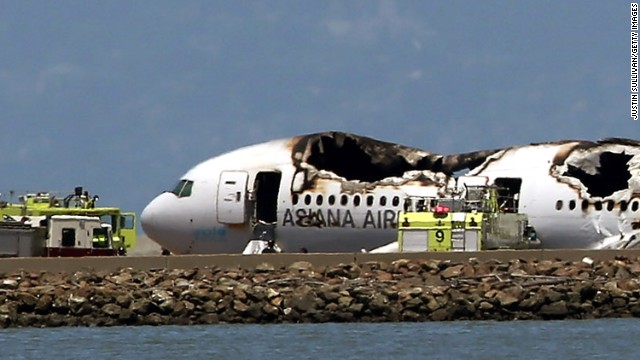 The Boeing 777 lies burned on the runway after it crashed landed on July 6.
The Boeing 777 lies burned on the runway after it crashed landed on July 6.
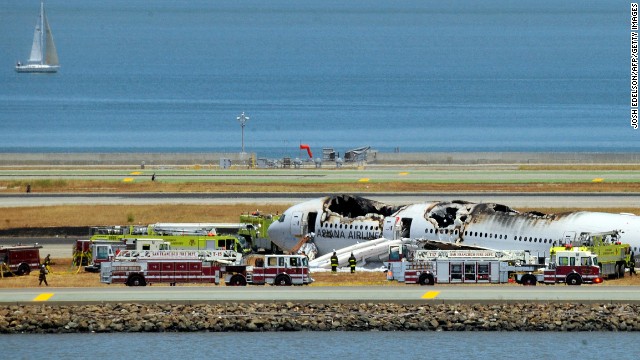 The burned-out plane sits surrounded by emergency vehicles on July 6.
The burned-out plane sits surrounded by emergency vehicles on July 6.
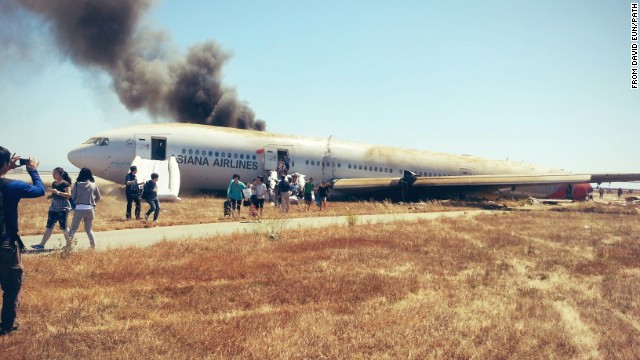 David Eun, a passenger on Asiana Airlines Flight 214, posted this image to Path.com along with the message, "I just crash landed at SFO. Tail ripped off. Most everyone seems fine, I'm ok. Surreal..." It was one of the first photographs taken after the crash.
David Eun, a passenger on Asiana Airlines Flight 214, posted this image to Path.com along with the message, "I just crash landed at SFO. Tail ripped off. Most everyone seems fine, I'm ok. Surreal..." It was one of the first photographs taken after the crash.
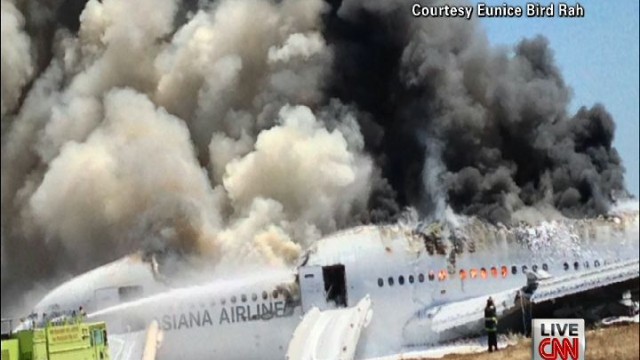 Smoke billows from the Boeing 777 after it crash landed on July 6.
Smoke billows from the Boeing 777 after it crash landed on July 6.
 iReporter Amanda Painter captured this photo while waiting at the San Francisco airport on July 6. The entire airport has shut down and flights diverted to other airports.
iReporter Amanda Painter captured this photo while waiting at the San Francisco airport on July 6. The entire airport has shut down and flights diverted to other airports.
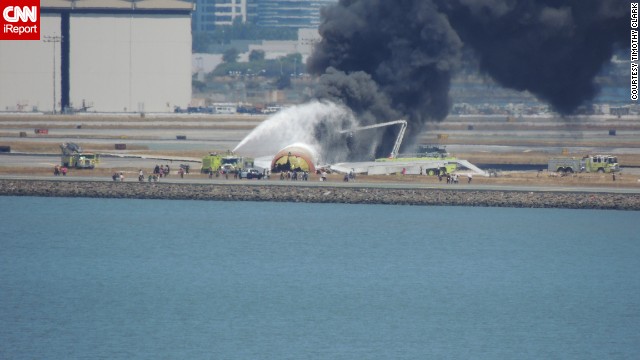 iReporter Timothy Clark was standing on the eighth floor of the Embassy Suites Airport Hotel when he heard a loud crashing sound from outside. 'My daughter told me she heard a plane crash. I used my camera to get a clearer view and I could see a dust cloud. Then people running from the plane, then flames," he said.
iReporter Timothy Clark was standing on the eighth floor of the Embassy Suites Airport Hotel when he heard a loud crashing sound from outside. 'My daughter told me she heard a plane crash. I used my camera to get a clearer view and I could see a dust cloud. Then people running from the plane, then flames," he said.
 iReporter Val captured this photo while waiting in a departure lounge at the San Francisco airport on July 6. Val observed the billowing smoke and emergency responders' rush in.
iReporter Val captured this photo while waiting in a departure lounge at the San Francisco airport on July 6. Val observed the billowing smoke and emergency responders' rush in.
 The beginning of the debris trail left by the Boeing 777 is seen July 6 at the edge of the runway, where it meets San Francisco Bay.
The beginning of the debris trail left by the Boeing 777 is seen July 6 at the edge of the runway, where it meets San Francisco Bay.
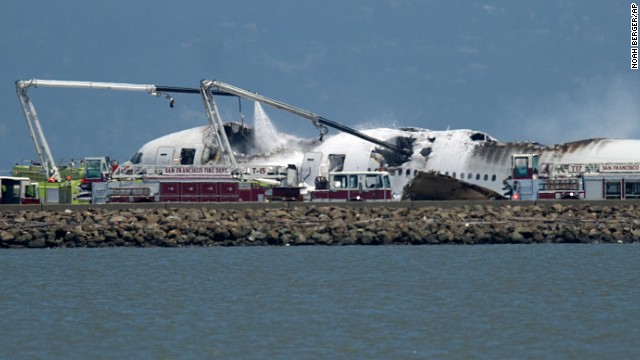 A fire truck sprays water on the charred plane on July 6.
A fire truck sprays water on the charred plane on July 6.
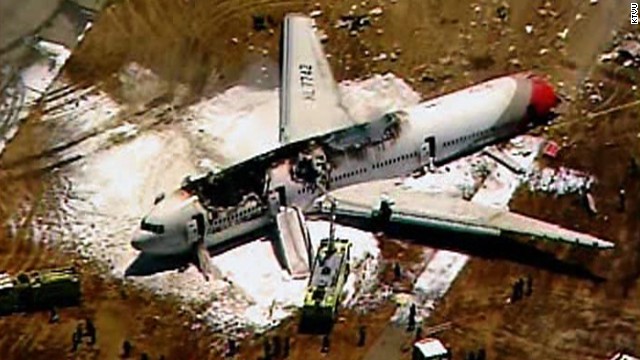 The top of the aircraft was badly burned and, in spots, gone entirely, according to video from CNN affiliate KTVU.
The top of the aircraft was badly burned and, in spots, gone entirely, according to video from CNN affiliate KTVU.
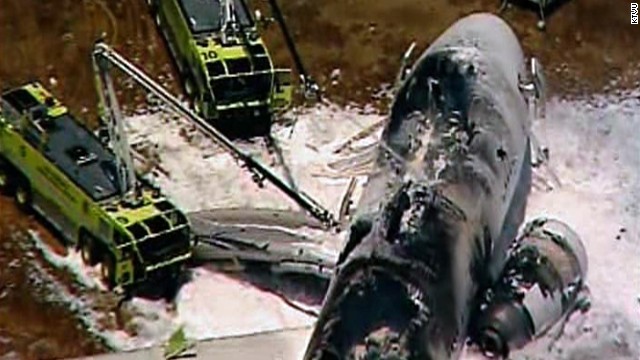 Rescue crews douse the plane on July 6.
Rescue crews douse the plane on July 6.
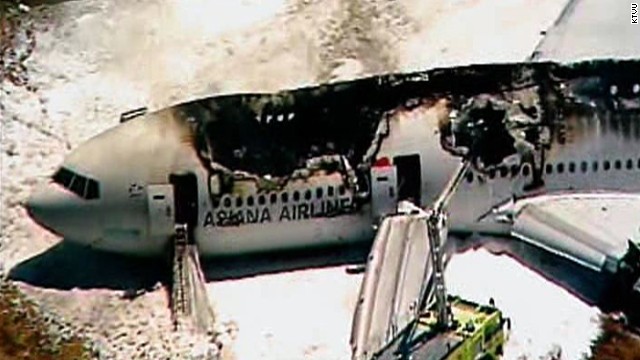 Firefighters attempt to put out the flames and evacuation slides can be seen protruding from the plane on July 6.
Firefighters attempt to put out the flames and evacuation slides can be seen protruding from the plane on July 6.
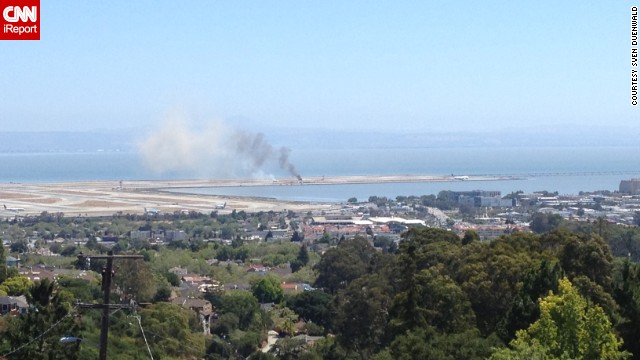 Sven Duenwald was at home when he saw smoke rising into the air near the San Francisco International Airport.
Sven Duenwald was at home when he saw smoke rising into the air near the San Francisco International Airport.
 Debris litters the runway on July 6.
Debris litters the runway on July 6.
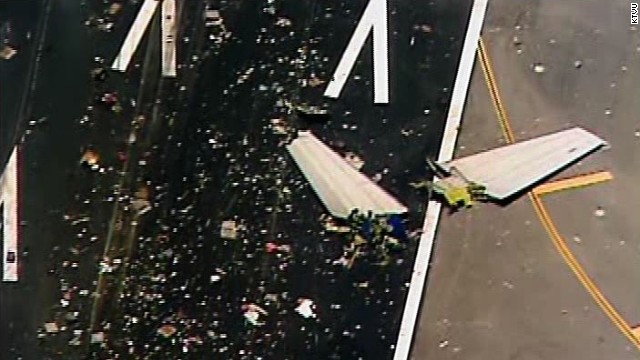 Pieces of the plane are strewn across the runway on July 6.
Pieces of the plane are strewn across the runway on July 6.
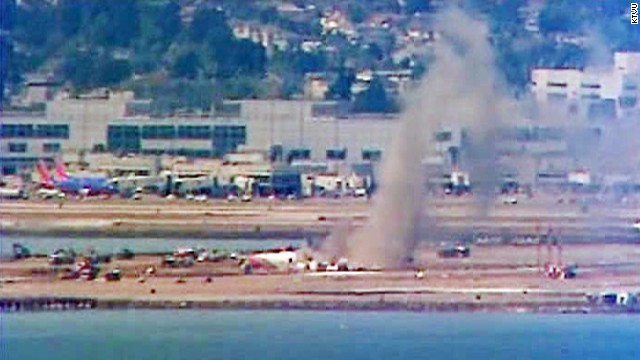 Smoke rises from the runway on July 6.
Smoke rises from the runway on July 6.
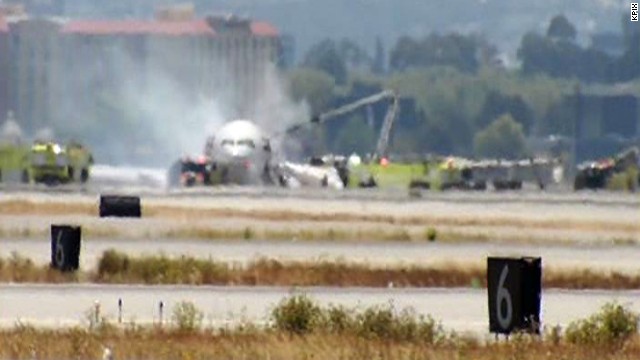 Firefighters work to put out the flames on July 6.
Firefighters work to put out the flames on July 6.
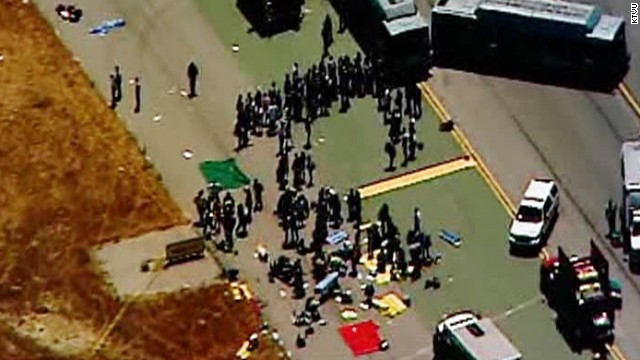 Rescue workers on the scene on July 6.
Rescue workers on the scene on July 6.






















No comments:
Post a Comment